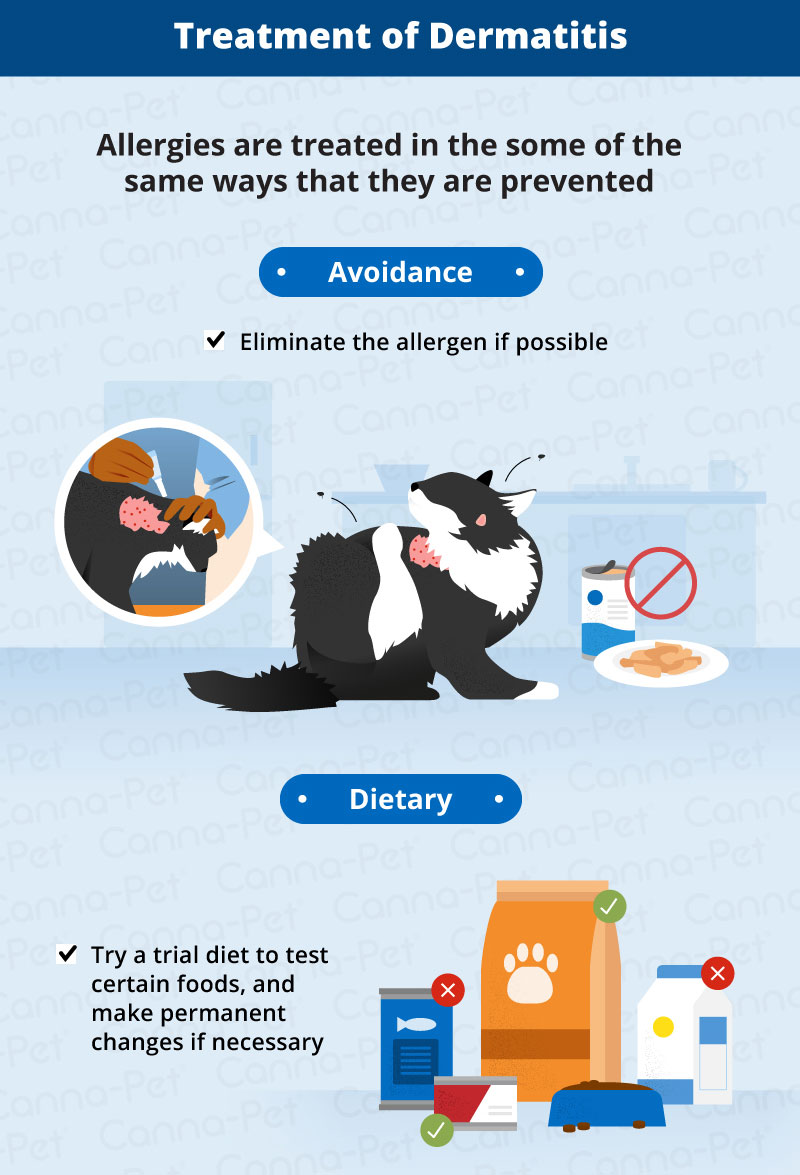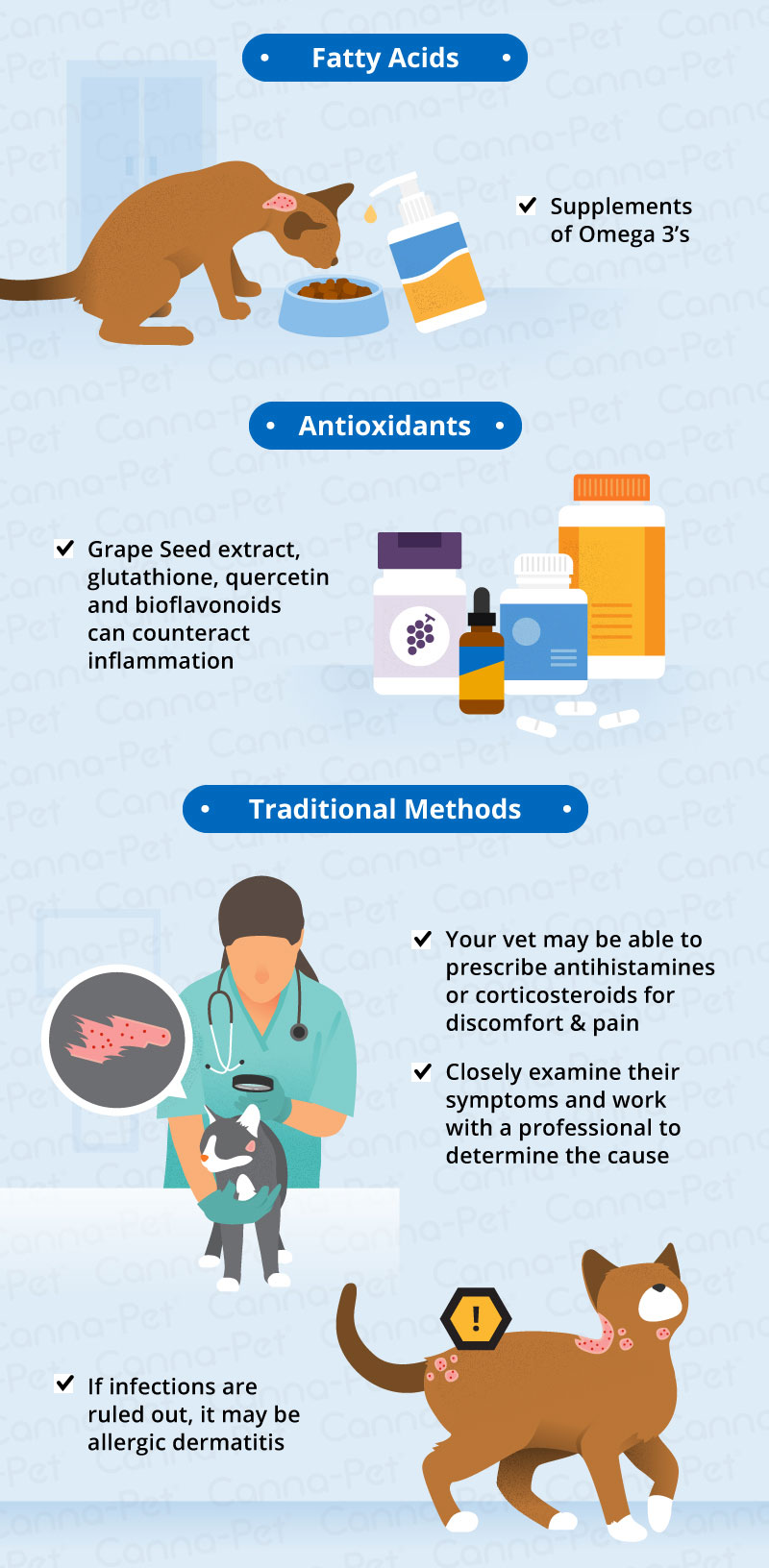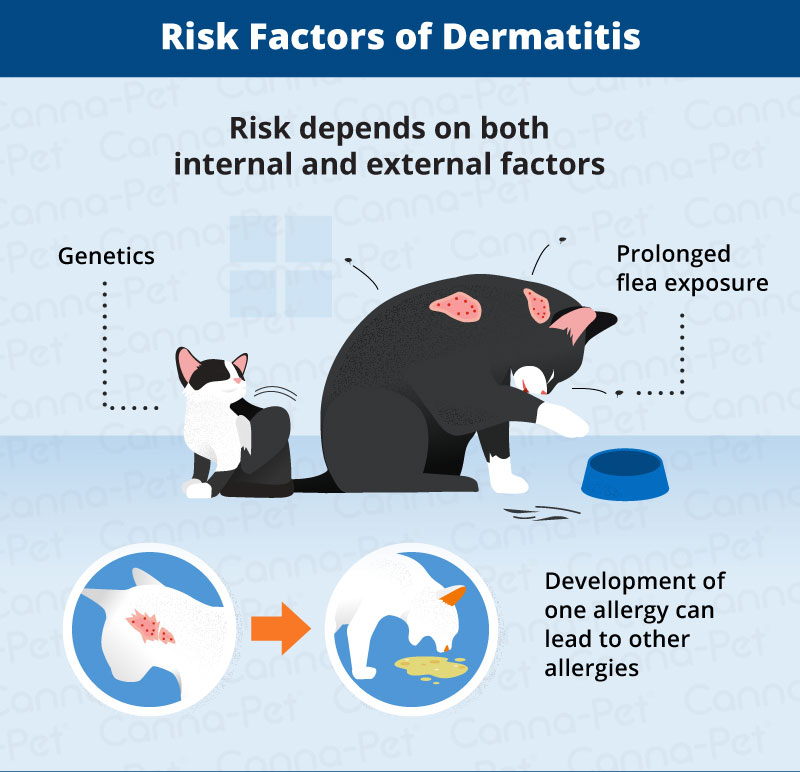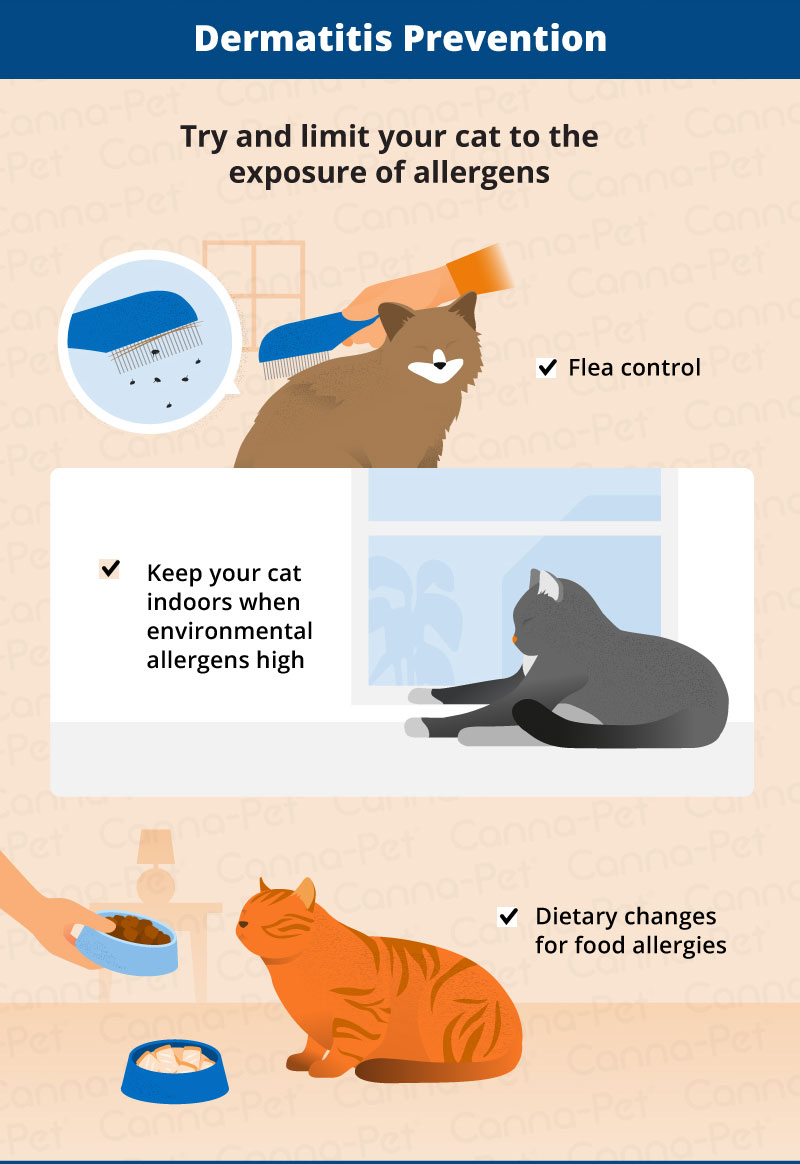Your cat’s skin is one of the largest and hardest working organs in their body. Not only does it protect delicate organs and maintain body temperature, but it creates oily secretions as well as hair and claws.
Like other organs, the skin is prone to a number of issues. These conditions are called dermatitis and can be caused by infections. But infections aren’t always the cause. It’s fairly common for a number of allergies to create these problems in cats, making them very uncomfortable.
Check out the following information to learn if your kitty may be suffering from allergic dermatitis and what you can do to help.
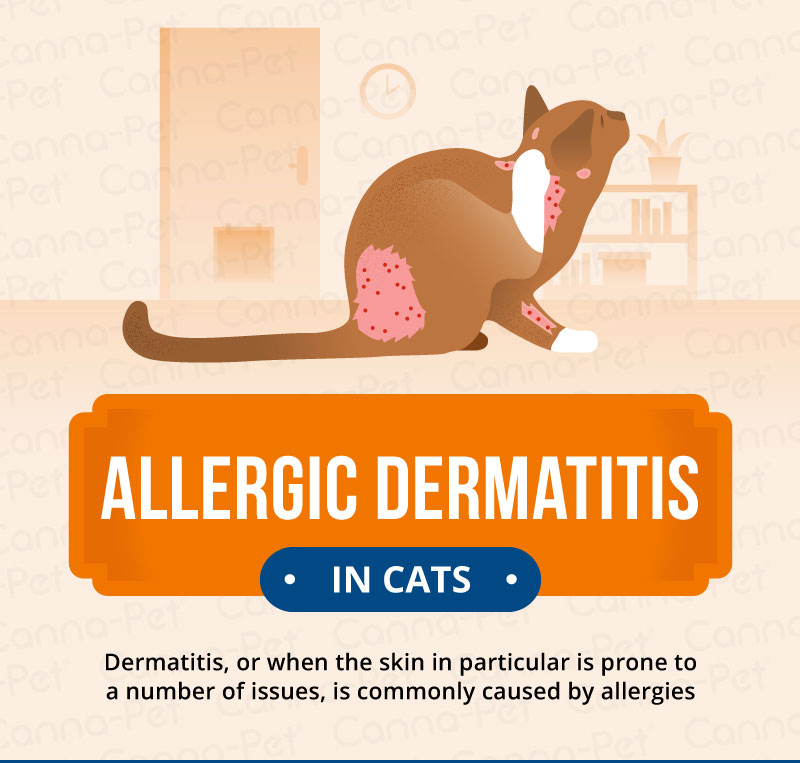
Causes of Allergic Dermatitis in Cats
When your feline friend comes into contact with an allergen, their body reacts causing itching and inflammation.
Common cat skin problems caused by allergens include:
Fleas
Cats between three to six years old may develop a hypersensitivity to fleas. Lesions develop on the back, even when there are only a few fleas present.
Food
Your kitty can develop food allergies at any age, but they usually occur after they’ve been on the same diet for a while. In addition to skin issues, these allergies may be accompanied by vomiting or diarrhea.
Atopy
Certain allergens can be inhaled and cause skin reactions in the face and feet of your one- to three-year old cat.
Less common allergens can also cause problems, including:
Drug Reactions
Certain medicines, especially antibiotics, can cause scratching, redness and hives. Severe allergies may even cause sloughing of skin or serious illness.
Contact
Anything your cat comes in contact with can cause allergies in extreme cases. This includes carpet fibers, floor finishes, or shampoos. This type of dermatitis is usually only visible on the undercoat or areas where there is little hair.
Bacterial
Skin infections like Pyoderma or yeast infections can occur by themselves or with dermatitis.
Parasites
Cheyletiellosis, mites, and lice can cause dermatitis in cats as well.
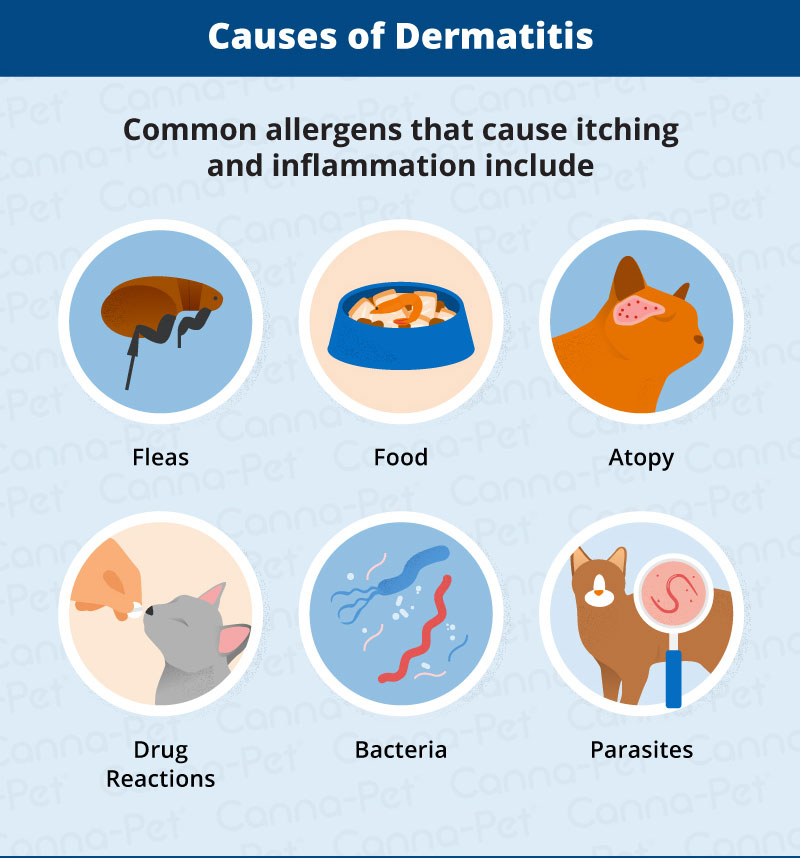
Symptoms of Allergic Dermatitis in Cats
More severe cases of allergic dermatitis are easily recognized, while other may have very subtle signs and symptoms. Look for the following symptoms on your cat:
- Constantly shaking the head
- Hair loss
- Brownish saliva
- Red, scaly or raised patches of skin
- Thick skin
- Excessive biting, licking, or scratching of the skin, feet or ears
- Bumps or pus-filled areas on the skin
- Increased pigmentation on the skin
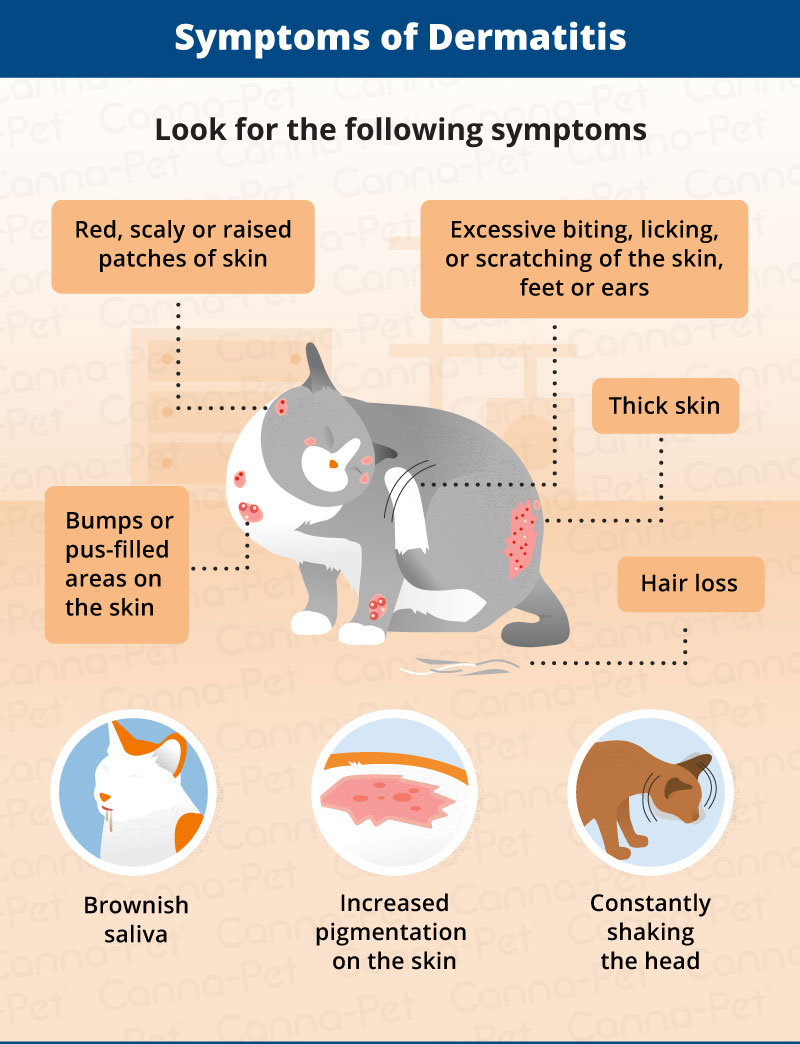
Risk Factors
Your cat’s risk for developing dermatitis depends on a variety of factors, including genetics. Prolonged flea exposure can put felines at greater risk for developing flea bite allergies. Sometimes the development of one allergy can put your kitty at risk for developing other allergies.
Prevention
If you know your cat has allergies, the best prevention for allergic dermatitis is to limit their exposure to allergens. Keep your cat indoors when environmental allergens are high. Flea control is crucial for cats with flea bite allergies. If food allergies are the culprit, make the necessary changes to their diet.
Treatment of Allergic Dermatitis in Cats
Allergies in cats are treated in the same way they are prevented. The following list of treatments may help your cat with their allergic dermatitis:
Avoidance
This method works well if you know exactly what your cat is allergic to. Eliminate the allergen from your cat’s environment, and the dermatitis should clear up on its own. Flea control is important for bite allergies.
Dietary
Cats with food allergies are put on a trial diet for two to three months. If the symptoms go away, permanent changes may be necessary to keep symptoms at bay.
Fatty Acids
Omega 3 fatty acids are a popular choice for an itchy kitty. Since cats love fish oil, getting them to take it shouldn’t be difficult. In order to treat itchiness, larger doses of about 500mg are recommended.
Antioxidants
Because cat allergies increase cell death, antioxidants like grapeseed extract, glutathione, quercetin and bioflavonoids can counteract the increased inflammation this causes.
Traditional Methods
If you take your cat to the vet, she may prescribe antihistamines or corticosteroids. These medicines work quickly to alleviate your kitty’s discomfort.
If your cat is suffering from a skin condition, she could be in a lot of pain. Take the time to closely examine their symptoms and work with a professional to determine the cause.
If infections are ruled out, it may be allergic dermatitis. Once the allergen is determined, do everything you can to eliminate it from your kitty’s environment. With a little patience and experimenting, your cat will be feeling better in no time.
